How to get around in Japan? Public transportation in Japan includes buses, trains, and taxis. Whether you are a visitor to Japan or a resident living here, the bus service in Japan will be helpful to help you move around. However, there are many different types of buses with different systems of operation, in particular local buses in cities can be confusing.
In this article, we explain how to ride the main local buses and what to look out for. We have compiled the important information to make it easier for you to understand. We also introduce how to use Japan night buses and highway buses, which are convenient for travelling from the airport and when travelling.
Table of Content
- How to Ride Local Bus in Japan: Different Boarding and Payment Systems in Different Regions
- Things to Know About Riding a Local Bus in Japan
- How to Ride Highway Bus in Japan
- Things to Know About Riding a Highway Bus in Japan
- Summary
How to Ride Local Bus in Japan: Different Boarding and Payment Systems in Different Regions

Local buses or transit buses are called「路線バス rosen basu」in Japan. In Japan, how to ride a local bus (boarding, getting off, paying) is different from region to region. Therefore, when riding the local bus for the first time in Japan or the first time in a region, it is a good idea to observe and follow what people do or ask the bus driver. There are several patterns for boarding the bus and timing for payment. Here are some of the examples of patterns to keep in mind.
1. Board from the Back Door, Pay When Getting Off
Entering the bus from the back door and paying your fee when getting off is the most common way to use the local bus in Japan. When boarding, take a bus ticket from the ticket machine at the back door, and keep it with you until getting off for payment. Buses in Japan usually have doors at the front and back.
When getting off, use the front door, being careful to not get in the way of entering passengers from the back door.
If you are waiting at the bus stop and the bus arrives, it will first unload passengers from the exit door, and then open the entry door.
But which door do I enter with?
If you are worried about not knowing which door to use, an option is to check the vehicle’s body. The destination sign on the front of the bus or next to the door may indicate how to get on. If you see the word 「中乗り nakanori」, that means enter from the back door.
2. Board from the Front Door, Pay when Getting Off
Some local buses only have one door. In this case,the same door is used to enter and exit the bus, and so payment is done when getting off. This type of buses are more common in rural areas and long-distance travel buses.
For buses with few passengers, it is helpful to tell the driver in advance what stop you are getting off at, so that payment can be made smoothly.
3. Board from the Front Door, Paying when Getting On
In some areas, such as Tokyo’s 23 wards and Nagoya, the bus is usually boarded from the front door and payment is made upon entry. In this case, the back door is used to get off the bus. These types of buses usually run through the city and have a flat fare, which means you pay the same fee no matter how far you travel. These are the main types of local buses running around Tokyo, so if you plan on travelling in Tokyo, it would be good to know beforehand.
There is also a system where passengers tell the bus driver where they are getting off when they board the bus and pay for the fee right then and there. However, this system was prone to overpayment and underpayment due to misinformation of the destination, so many local bus systems have switched to one of the above mentioned methods.
Writer's Pick
Things to Know About Riding a Local Bus in Japan
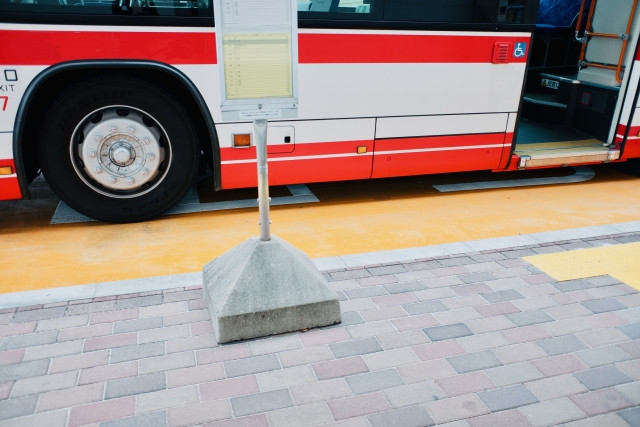
There are many things to know about using the bus service in Japan. Like the fact that unlike subways in Japan, buses are heavily affected by traffic situations which may cause delays or service suspension. If you are in a hurry, check the bus’s operation status first before getting on or use the subway which is more reliable (also check for delays just in case).
Let’s take a look at some other points to be cautious of when riding a bus in Japan.
Check the Front and Side of Bus for Destinations
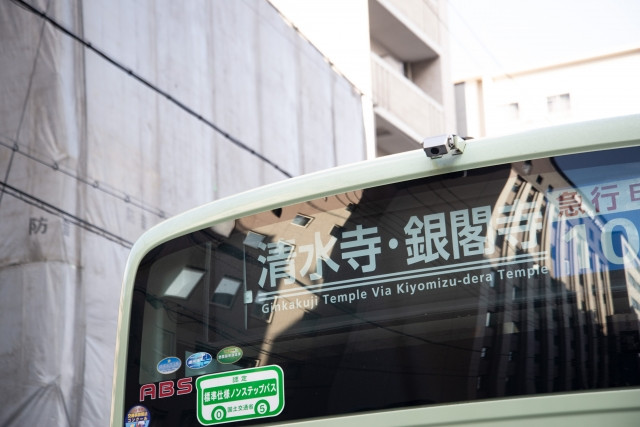
Local buses operate on a number of routes with identical-looking vehicles, so be sure to check if the bus is going to your destination to avoid getting on the wrong one. You can check where the bus is heading on the electronic board at the front and on the side of the bus. The board on the front shows the major stops and the final destination, while the board on the side shows the other bus stops along the journey.
In some cases, the buses may have the same final destination but the stops along the way are different, so check carefully if your destination is listed down. If you are unsure which bus to take, it is always best to ask the bus driver.
Press the Button to Get Off
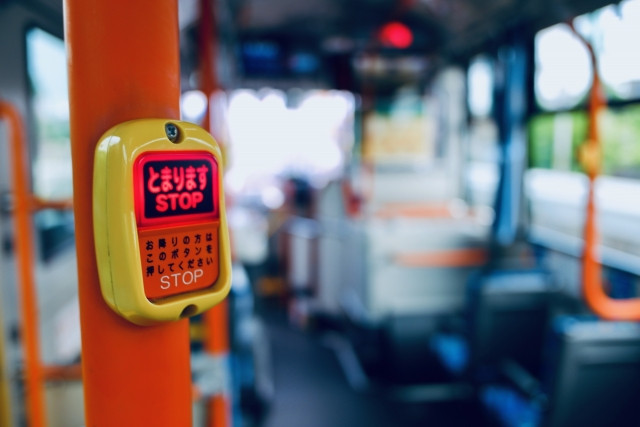
In general, buses do not stop unless there are passengers getting on or off. Therefore, you need to let the bus driver know you are getting off at the next stop by pressing the get off button. At the front of the bus and near to the bus driver is a monitor that shows the bus’s next stop. When your destination appears on the monitor is the time to press the button. The get off button can be found all over the bus on handrails, windowsills or the back of seats.
Do Not Lose Your Ticket
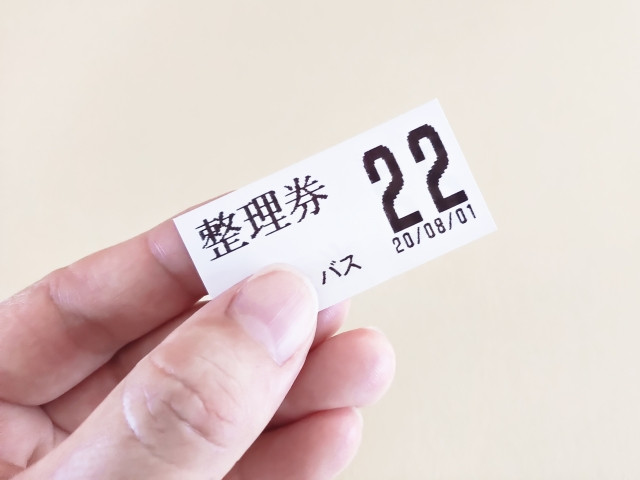
On buses with post-payment (when getting off), tickets are issued to know what bus stop you boarded from. You will need this when paying the fare, so make sure not to lose it. If you do lose your ticket, be sure to inform the bus driver. By right you should pay the fare from your boarding point to disembarkation point, but if you lose your ticket, you may need to pay a little more or the maximum fare depending on what stop you get off.
Pay Cash to the Fare Machine
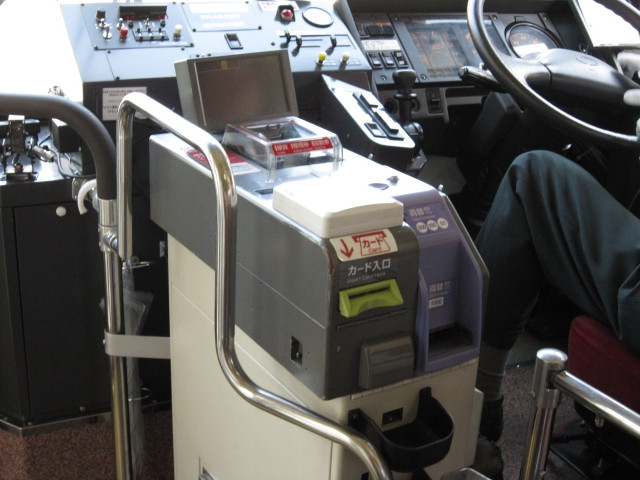
When paying the bus fare with cash, put the money into the fare box (運賃箱 unchin bako) which is a paying machine these days. The paying machine is right by the bus driver’s seat, and there is usually a money changer next to it, so be careful not to put money in the wrong machine.
For buses that issue tickets, you need to put the ticket into the paying machine together with the cash. Note that with a few exceptions, most local buses do not provide change. If you accidentally overpay, then inform the bus driver. The difference can be refunded or converted into bus coupons.
Have Spare Change in Advance
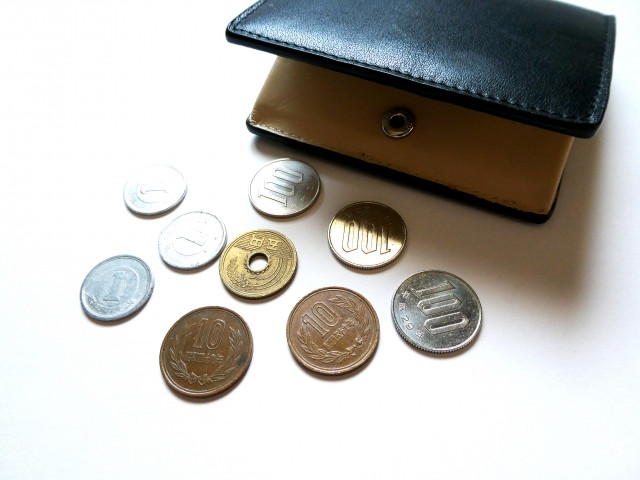
If you are planning to pay the local bus fare with cash, it is recommended to exchange money from cash to coins beforehand. Money changers on buses can only be used while the bus is stopped for safety reasons. Also, when disembarking, the area near the money changer might become crowded, and you stopping to change money will inconvenience other passengers. Have some change ready before boarding the bus or exchange money on board while the bus is stopped at traffic lights.
Transportation IC Cards Can Be Used on Buses
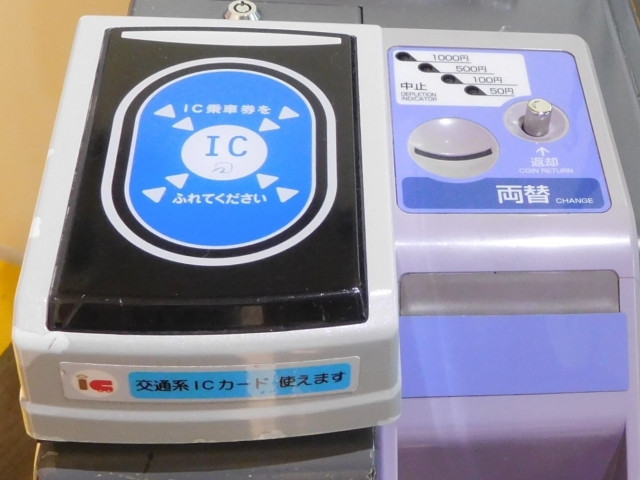
In recent years, an increasing number of local buses have been equipped to allow fare payment by IC Card. By paying with an IC card, there is no need to prepare small change and bus tickets are not needed. All you need to do is tap your IC card when boarding for flat fare buses, and for post-payment system buses, tap when you board and when you get off. The IC card automatically records when you get on and get off, so the fee is automatically calculated and deducted with no issues like overpaying.
There are also some buses that are cheaper to ride when using an IC card compared to paying with cash. If you find change to be troublesome, or are worried about losing your ticket, or want to pay the cheapest fare, we recommend using an IC card on local buses.
How to Ride Highway Bus in Japan
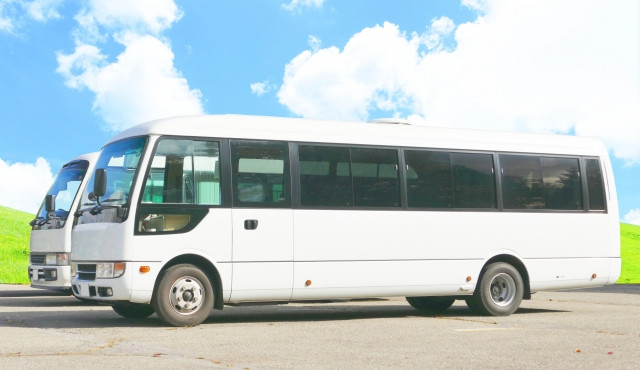
Express bus or highway bus are called「高速バス kousoku basu」in Japanese. Highway buses are the way to go if you want cheap transportation over long distances. There are also overnight buses or night buses called「夜行バス yakou basu」that, as its name suggests, travels overnight and arrives at your destination during the day. This saves time as you can sleep on the bus throughout the journey and arrive ready to carry out your planned activities at your destination.
Advance Purchase or Reservation Required for Highway Buses in Japan
Unlike local buses, tickets for highway buses need to be purchased in advance. Tickets for highway buses and night buses can be bought online or by telephone. Payment methods include credit card, convenience store payment and payment at the counter. Once payment is completed, you will receive the tickets by email, so be sure to bring it with you whether digitally or print out. Note that even if payment is completed, you might not be able to board the bus without a ticket.
There are highway and overnight buses that do not need reservations provided there are still seats available for that day. To guarantee a seat, make a reservation in advance.
Flow of Boarding a Highway Bus

In this part, we will introduce the flow to boarding a highway bus in Japan. Have a look if you have not ridden a highway bus or overnight bus in Japan before.
Ticket Confirmation at Bus Stop
Your boarding ticket (bus ticket) must be presented for confirmation before boarding. Not necessarily the bus driver, a staff member will check tickets approximately 15 minutes before departure time, so show them your ticket when you arrive at the bus stop. If you bought your ticket in-person it will be a paper ticket, but if you made your reservation online, you can show your ticket on your smartphone or tablet. Only after your ticket has been confirmed will you be allowed to board the bus.
Large Luggage Goes in the Trunk
When riding a highway bus or overnight bus, large luggage like suitcases and travel bags should go to the trunk under the bus. Luggage will be loaded into the trunk by the staff members. There will be a “queue”, so just add your luggage to it, or the staff will take it from you. Likewise when you arrive at the destination, the luggage will be unloaded for everyone so just wait patiently until yours is taken out. For buses with multiple destinations, the staff may ask what your destination is to load the luggage more effectively - luggage whose destination will be reached first will be placed nearer to the trunk door.
Luggage brought onto the bus should be limited to ones that can fit in the onboard storage compartments or your legroom - too much stuff cramped at your feet since you want to be comfortable for long travel.
Note that pets are not allowed on highway buses. If you wish to bring your pet along, it is best to take the shinkansen (bullet train) or plane.
Assigned Seats
After having your tickets confirmed and passed your large luggage for loading, you can board the bus. Be sure to sit only at your assigned seat as written on your ticket. As trips are usually long on highway buses and overnight buses, there will be several stops for breaks at service areas along the way. Make sure you remember your seat number when getting off the bus to use the toilet or rehydrate.
Things to Know About Riding a Highway Bus in Japan
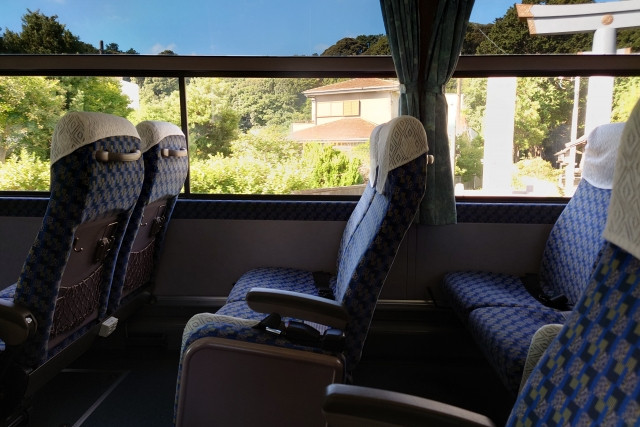
Etiquette and precautions on highway buses differ from those for local buses. If you are riding a highway bus or night bus in Japan for the first time, pay attention to the following points.
Be Punctual for Departure
Highway buses have fixed departure times, so make sure you arrive on time. If you are late, the bus will not wait for you. You will have to rebook a ticket and might have to board from a different stop.
Highway buses and overnight buses usually depart from bus terminals where there are waiting rooms, convenience stores, and cafes to kill time even if you arrive early. It is recommended to be at the departure point at least 15 minutes before departure which is usually when ticket checking and luggage loading begins.
Be Quiet on the Bus
People take naps on the highway bus, and in the case of overnight buses, most people will be sleeping, so it is good manners to refrain from speaking inside the highway bus. Some day buses and sightseeing tour buses may allow conversation, but keep your tone low in consideration of other passengers.
Food & Drinks that Would Affect Other Passengers are Prohibited
As a rule, strong-smelling food, alcohol and snack food are not allowed on highway buses. For example, food like hamburgers, instant noodles, and curry will trouble other customers with the smell and may stain the seats.
If you want to eat or drink on the highway bus, foods like onigiri (rice balls) and bread are recommended, and drinks should have lids. Snacks like gummies and chocolate that do not cause noise are also alright.
Avoid Using Electronic Devices
Night buses have a light-out period, so avoid using smartphones, tablets, laptops, etc. electric devices at this time when people are trying to sleep. Sound may also leak from your earphones, so be careful when listening to music and lower the volume if necessary.
If you want to use your smartphone or devices throughout the night without worrying about your surroundings and troubling others, then choose a night bus that has curtains around your seat.
Ask the Person Behind You When Reclining Seat
Highway bus seats can be reclined. When reclining your seat, it is good manners to say something to the person behind you before doing so. A reclined seat is more comfortable when sleeping, but be careful not to recline too far as this may disturb the passenger behind.
Drink holders are usually attached to the back of seats, so reclining without asking may result in the drink being spilled on the person behind you. Before reclining your seat, turn to see the person behind you and say,
椅子を倒しても良いですか?
Isu wo taoshite mo ii desuka?
- Do you mind if I recline my chair?
Summary
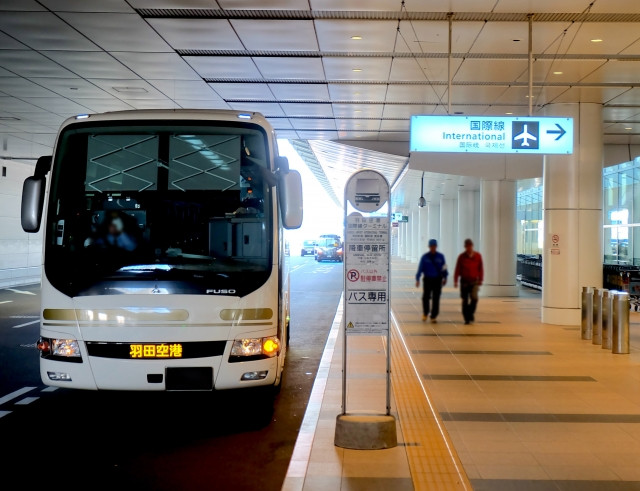
Local buses, highway buses, and night buses are great public transportation to use when visiting Japan. If you are not sure about how to ride the bus, the best way is to observe and follow other passengers, or check the user guide on bus company websites.
There are some places in Japan that are best explored by bus, or use local buses as the main public transportation, for example Kyoto. Therefore, it would be good to know how to use bus services in Japan, you never know when you may need it to get somewhere.











.jpg)























